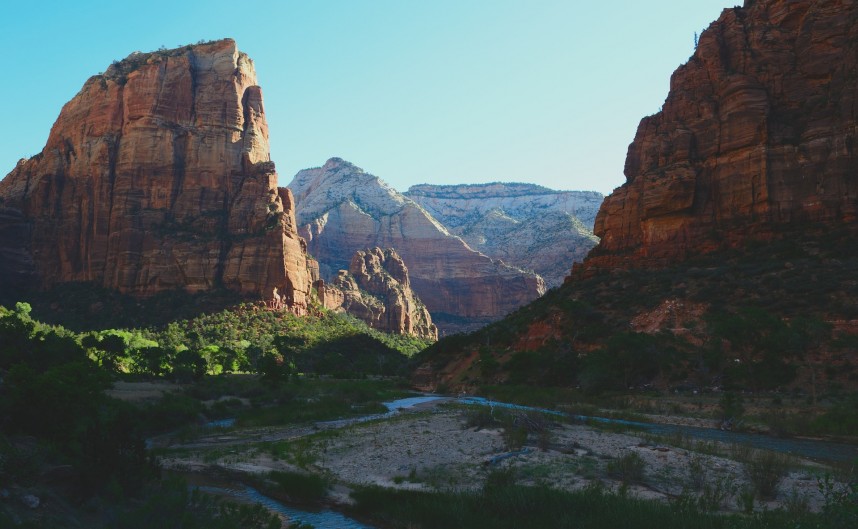As Jack Kerouac wrote: “There was nowhere to go but everywhere, so just keep on rolling under the stars.” And under the stars was where I wanted to be. Free, on the road, camping as the land called me through a maze of National Parks and wide open landscapes.
The American West has some of the best protected natural beauty in the world, with plenty of certified dark skies to create your own million star camp, and a tonne of it is in Utah. I couldn’t wait to hit the road with no reservations and nothing but a map and a sense of discovery; to lose myself in its deserts and national parks.

pc: Utah.com
Arches National Park
Of Utah’s five major National Parks, Arches (pictured above) is easily my favorite, and the four-and-a-half-hour drive from Salt Lake City offers plenty of scenic byways and small town exploration through red rock country.
Park entrance starts at $30 per car, and dramatic backdrops offer so many areas to explore it’s hard to limit it to just a few.
There are a handful of unmissable hikes – Double O Arch, Delicate Arch, Landscape Arch and Devil’s Garden – that range from beginner to hardcore, and there are some super backcountry routes for overnight campers.
You’ll find good, friendly accommodation in the town of Moab, just five miles south of the park.

pc: Alltrails.com
Fifth Water Hot Springs
An hour-and-fifteen-minute drive south of Salt Lake City, off of the I-15, you’ll find Highway 6 heading East to the Fifth Water (Diamond Fork) Hot Springs.
Soaking my bones in Utah’s “Little Iceland” was a perfect start to my open road adventures. With the road open, from the trailhead, the round trip hike is 4.6 miles, and I was able to reach the pale blue geothermal pots in 40 minutes.
Family and dog-friendly, visitors are respectful of shared space, and you’ll have plenty of time to soak in the beautiful tiered waterfalls.

pc: Wikimedia Commons
Coral Pink Sand Dunes
Keeping south on the open road lies one of my favorite state parks – Coral Pink Sand Dunes – with seemingly infinite drifts of fine pinkish sand eroded from the Navajo Sandstone all around.
Located between colorful Mount Carmel and the hip boutiques of Kanab, there is plenty to attract visitors to the dunes. Razor tours, hiking, photography, and camping bring people from around the world. The shimmering coral dunes are a beautiful protected area that seems to take you to another era, where you can often find yourself as the only solo traveler within miles.
While you’re there, stop by the Helldive Canyon pictographs just outside the park, off the “T” on Hancock Road.
You’ll want to refer to a map for this one and be prepared for a 6-mile desert hike. This type of rock art is found throughout Southern Utah and only adds to the picturesque history of the canyons. Day visits are $5.
Book a hotel near the Coral Pink Sand Dunes

pc: Pixabay
Canyonlands
A unique part of Southern Utah, rivers divide this National Park wilderness into four parts: The Needles, The Maze, Island in The Sky, and the Rivers.
These primitive desert landscapes were formed by Green River erosion and millions of years of deposited rock layers. A labyrinth of 527 square miles contains countless miles of trails, hikes, and fantastical photo opportunities.
I also went more off road to a primitive campsite in Horseshoe Canyon where some of the oldest large-scale pictograph murals dwell on canyon walls deep in the Barrier Canyon. This rock art predates the Puebloans and is worth the hike.
There are so many rare natural creations here: it’s a place to spend an extra few days to explore. Entry is $25 entrance fee, with no-cost camping in many of the off-road campsites.

pc: Pixabay
Zion
Zion is one of the noblest of the national parks in the American West. Here you can wander forest trails and deep chasms of Zion’s slot canyons, The Narrows, The Subway, (wilderness permits required) and the steep drop-offs of Angel’s Landing to start.
Popular with advanced hiker, it’s a beautiful six-mile drive into Zion Canyon. Park the car and jump on one of the many free shuttles to the trailheads, or just wander the buttes and mesas. Just don’t forget to look up: while Zion has the red rock glow of much of Southern Utah’s picturesque parks, its canyons are narrow walls of Navajo Sandstone.
Most canyoneering, backpacking, and climbing require permits here, so prepare in advance. It’s $30 for park entrance per vehicle, with three full-use campsites.

pc: Weekend Warriors
Little Sahara – Jericho
Particles of quartz, garnet, and feldspar make up the 220 square miles of Central Utah’s free moving sand dunes. This is a place of diverse desert species and sagebrush flats, where you can ride off into the sunset of your own imagined Western movie.
Known for its overlanding and 4 x 4 recreation, it’s not unusual to wake to the distant buzz of ATVs, but there are also plenty of quiet spaces that house lizards, birds, snakes, and mule deer that look at passersby with curiosity.
With plenty of camping in the cooler shoulder months, I felt like I had the place all to myself. Plus: if you take the road north from Delta to Salt Lake City, you can take in sections of the old Route 66 roadways, with their abandoned cafes and storefronts; roadways once buzzing with American West road trippers.
A fitting end to any adventure.
Looking for more Utah travel tips? Check out TRVL’s Utah destination guide
Sharing is caring
Originally published at trvl.com

